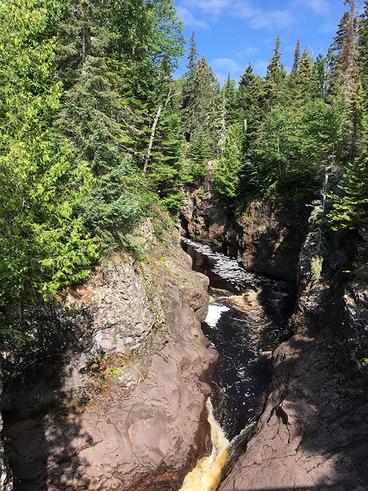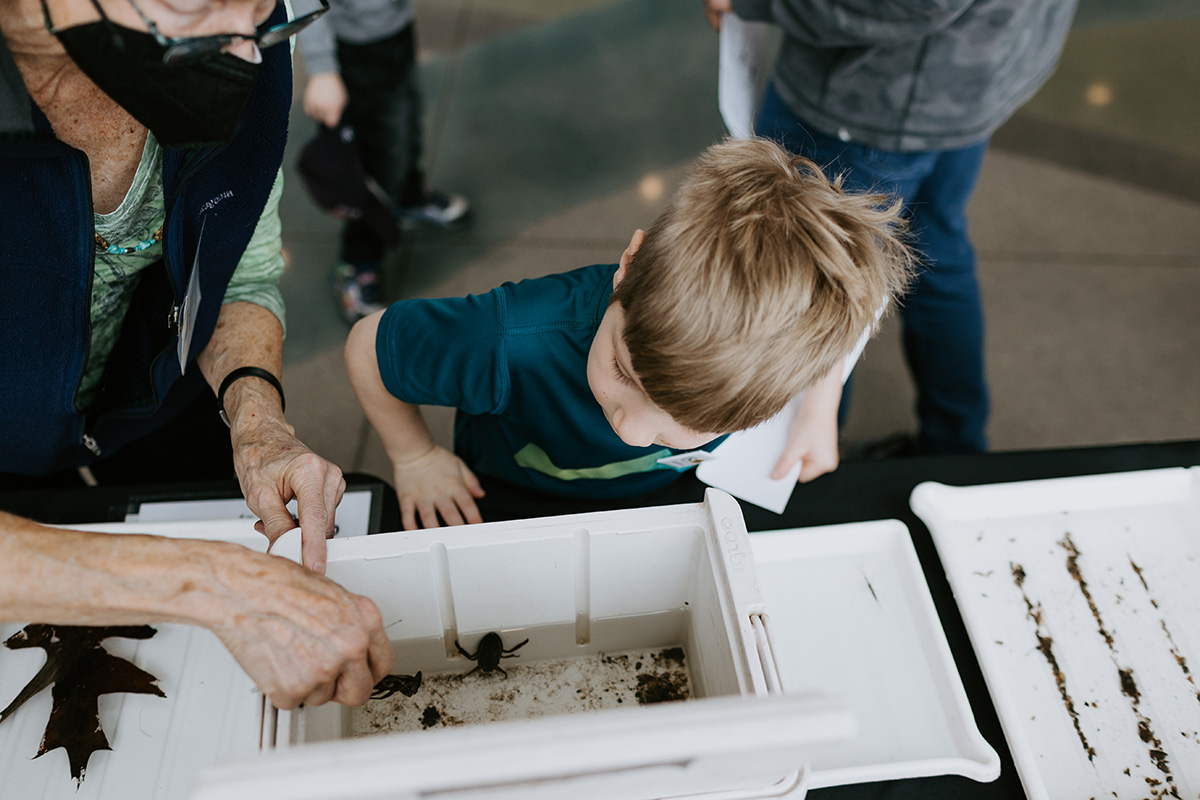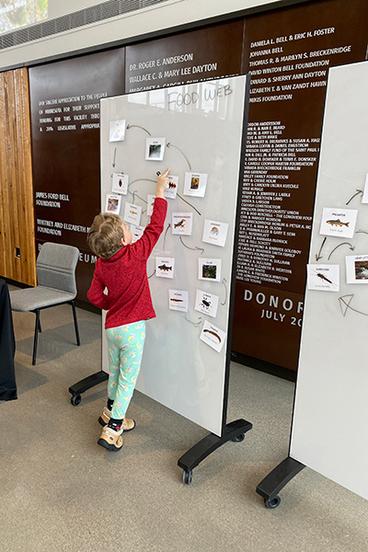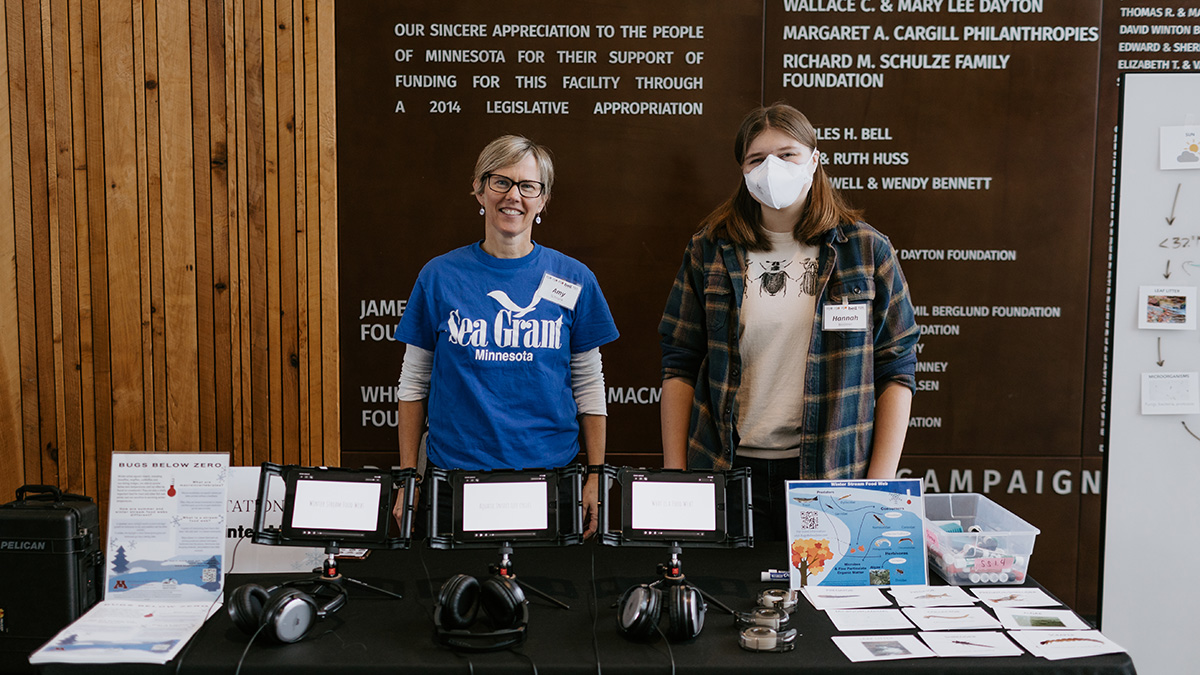+
What is a trout stream?
Seems obvious, right? A stream with trout.

But it takes more than just flowing water to make a stream a trout stream. Trout need cold water to survive. Cooler water enables water to hold more oxygen. Forested areas along streams and rivers (known as riparian areas) provide shade and help to cool water. Such vegetated areas also help prevent erosion, filter pollutants, and provide food and shelter for fish and other aquatic organisms.
Duluth, Minnesota, is home to 16 designated trout streams. Despite their challenges, North Shore streams have two things in their favor. First is their cool, northern, lake-moderated climate. Second is the deep-forest bank cover, which shades the streams and keeps them cool. These influences keep these streams just cool enough to support trout.
+
Project description


The goal of this project is to show avid trout fishers, teachers and K-12 students what species are capable of existing only within a narrow temperature range (called cold stenothermal species or CSS) and how they and other community scientists can be involved in their conservation and related research. Our goal is to improve scientific understanding of cold stenothermal species (CSS) and their impact on Minnesota resources, and increase community opportunities to engage in scientific research. We hope to reach at least 100 participants through our workshops, and by using teachers as a conduit to their classrooms, that initial reach should multiply. At the conclusion of each workshop, we will ask participants to complete an evaluation questionnaire and follow-up by email with individual participants to determine their interest and resource needs to participate as community volunteers.
Related content:
- Check out this student-led website called Bugs Below Zero on discovering winter aquatic insects in Minnesota.
- Chironomidae Research Group

+
Why Minnesota Sea Grant?
This project supports Sea Grant's mission to enhance the practical use and conservation of coastal, marine, and Great Lakes resources in order to create a sustainable economy and environment.
+
What have we done lately?
- Winter 2025: The Bugs Below Zero project team is planning to present on the topic of winter food webs to the Master Naturalist community.
February 2024: The Bugs Below Zero project team hosted a winter event with K-12 students at the Belwin Conservancy.
+
Participants & audience
The target audiences for this project include avid trout fishers, teachers, K-12 students, and anyone else interested in learning more about this topic.
+
Funding
Support for this project is provided by a grant from the University of Minnesota Institute on the Environment.
+
Project history
2024
- February 2024: The Bugs Below Zero project team hosted a winter event with K-12 students at the Belwin Conservancy.
2023
- October 2023: The Bugs Below Zero project team is developing a virtual event aimed at engaging undergraduate students and community members in collecting winter macroinvertebrate data to contribute to a community science project.
- July 2023: The Bugs Below Zero project team is in the planning phase for hosting two more events for K-12 students and teachers in collaboration with the Belwin Conservancy and the Minnesota Valley National Wildlife Refuge as well as other virtual components for teachers and classrooms. Keep an eye on the Minnesota Sea Grant events page for updates.
2022
- December 2022: The Bugs Below Zero project team hosted their first two community events.
- The first event occurred at the Bell Museum on Dec. 10, 2022. The event included 1) a demonstration with live aquatic macroinvertebrates and a living stream, 2) a station where families could learn about the importance of winter stream food webs in Minnesota and help construct a food web, and 3) a caddisfly decoration station where kids and families learned about caddisfly life cycles and then could decorate their own caddisfly drawing. Visit the Bugs Below Zero project website for educational resources from this event.
- The second event was a webinar, "Macroinvertebrate Mania," that was shared with K-12 teachers and classrooms in schools in Minnesota.
- July 2022: The Bugs Below Zero project team received funding from the Minnesota Environment and Natural Resources Trust Fund as recommended by the Legislative-Citizen Commission on Minnesota Resources (LCCMR). The funded project began on July 1, 2022, and ends on June 30, 2025. The official title of this project is "Bugs Below Zero: Engaging Citizens in Winter Research."
- The project is led by University of Minnesota Associate Professor of Agricultural, Food, and Natural Resource Communication Rebecca Swenson. Co-PIs include University of Minnesota Professor of Entomology Leonard (Len) Ferrington, University of Minnesota CHS Digital Media Instructor Troy McKay, and Minnesota Sea Grant Extension Program Leader; Fisheries and Aquaculture Extension Educator Amy Schrank.
2020-2021
- The Bugs Below Zero project team developed and conducted three hands-on, interactive events intended to help build human capital and demonstrate the importance of CSS (cold stenothermal species) in the winter sport fishing industry and to the health of trout streams. The three events included:
- A streamside workshop on winter stream macroinvertebrates held on Feb. 27, 2021, at Browns Creek near Stillwater, Minnesota. Workshop attendants included students in the Mounds Park Academy Science Club.
- A virtual presentation to the University of Minnesota Master Naturalist Program on Feb. 26, 2021. The presentation was titled, “Bugs Below Zero: How citizen volunteers can improve understanding of stream food webs in the winter.”
- A trout and invertebrate workshop held on Feb. 22, 2020, in St. Paul, Minnesota for members of Trout Unlimited Chapters in Minnesota and Wisconsin. 2020-02-22 trout and invertebrate workshop flyer.pdf. Credit: Amy Schrank.
Program Staff
Media Mentions
- Bugs Below Zero: Minnesota researchers dive into the world of winter-active ins… KARE 11
- Citizen scientists needed to see what happens in trout streams in winter GazetteXtra
- Citizen scientists needed to see what happens in trout streams in winter The Derrick
- ‘Bugs Below Zero’: University of Minnesota Extension Engages Citizens in Winter… BNN Breaking
- A UMD trout stream expert will lead an online "Bugs Below Zero" event Jan. 11 Pioneer Press / TwinCities.com
- Citizen scientists needed to see what happens in trout streams in winter Duluth News Tribune
